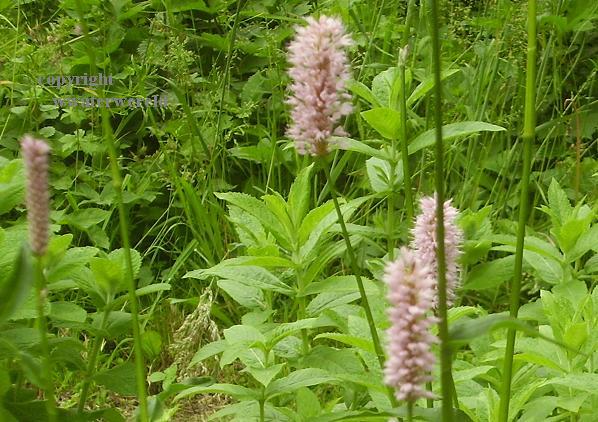Common Bistort
Persicaria bistorta
A native perennial with pink-red spikes to 1 meter
high. This plant blooms throughout the summer.
The flowers of the Common Bistort are visted by
bees. Cows do not like the root and will only
consume it when all the grass has been eaten.
Common Bistort belongs to the viper family
Persicaria.

The leaves are edible and have a spinach taste
but the snake-like root is slightly toxic.
This snake-like root gives the name "bistort".
Common Bistort in the garden
The surface should be moderately rich in nutrients,
and humid, and prefers a place near a pond or ditch.
Common Bistort flowers early
Common Bistort starts growing early in the spring
and uses its reserve food in its long root.
Cultivars of the common bistort
The most well known cultivar is Persicaria
bistorta 'Superba' : The flowers are larger and
has more bright colors then the common bistort.
Polygonaceae or knotweed family
A large plant family of plants with swollen node joints on
their stem. The leaves are simple and arranged
alternately on the stems .
Most of this family is called Persicaria, these plants
grow in the half shade and prefer moist ground.
- common bistortPersicaria bistorta)
- Himalayan knotweed (Persicaria wallichii)
- Pale Persicaria (Persicaria lapathifolia)
- Small Water-pepper (Persicaria minor)
- Redshank (Persicaria maculosa)
- Amphibious Bistort Persicaria amphibia)
- Water Pepper (Persicaria hydro piper)
- Zachte duizendknoop (Persicaria mitis)
- Tasteless Water-pepper (Persicaria mitis)
-Fallopia or Silver lace
Well known members are:
-Buckwheat
-Rhubarb
-Dock
-Garden sorrel
-Lamb
|
|